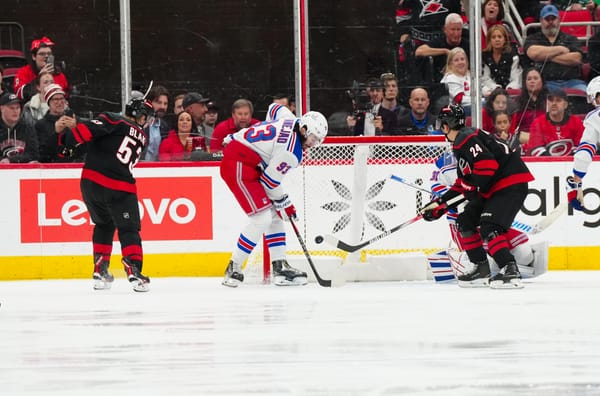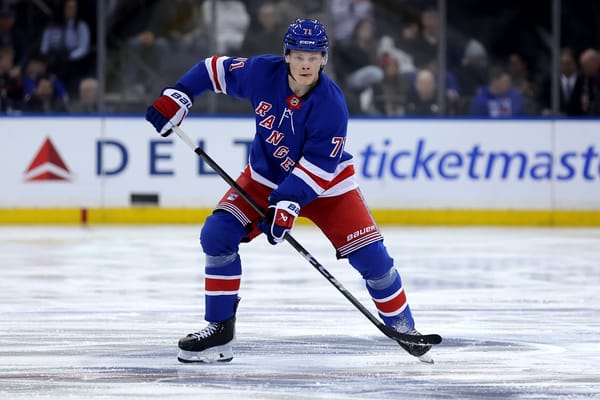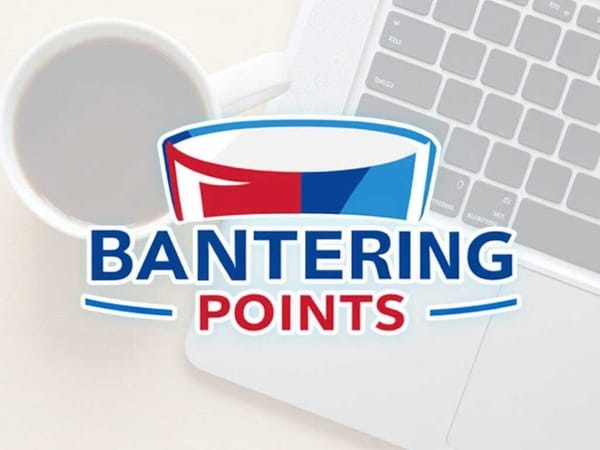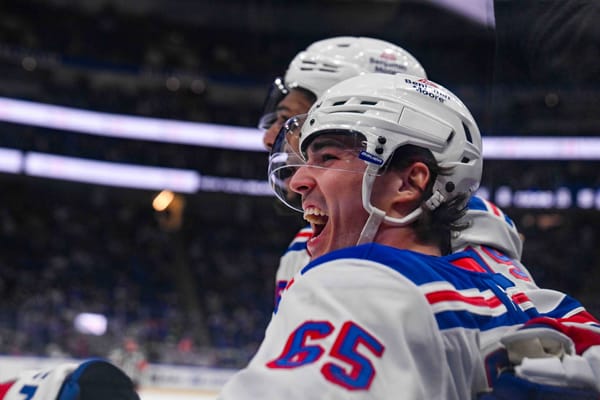Rangers’ Next Team President Will Have Challenges To Face Early On
A lot of names have been thrown around as potential fits to replace Glen Sather, and the next team president will need to address some shortcomings that currently exist within the organization.
There’s been no shortage of speculation on who could and/or should replace Glen Sather as the New York Rangers’ team president. Names likes John Davidson and Steve Yzerman have been the most popular with others bound to enter the mix soon, but whoever lands the job will have some important challenges to address early on.
While there are challenges for the next president to face, especially on a rebuilding team, it provides the Rangers with an opportunity to breath some life into the organization — even though going with the status quo and finding a candidate similar to what they’ve had would be the simplest path. So, there are some qualities the Rangers should seek while they search for their next president.
Last year the organization went in a bit of a different direction hiring a coach from the NCAA level in David Quinn to play a role in the rebuild. That type of thinking should also be applied to the search for a new team president.
Given the state of hockey in 2019, and where the Rangers are in their rebuild, the next team president needs to understands the importance of development at all levels, have a solid understanding of analytics and how they can be important to the franchise, and ideally should be someone who comes in with a new perspective that is willing to shake things up.
While there are a number of qualities and experiences to note, these should be of the highest priority given the state of the team. If the Rangers were a bit older and closer to contending, the new team president would have a different focus geared toward pushing the team over the finish line toward winning a Stanley Cup. But right now, based on where they are in their rebuild, this is their reality.
The Hartford Wolf Pack have been a disaster for the better part of the last decade. Adam has written about the Pack’s woes extensively, and I’d suggest checking out his most recent story from February on the problems in Hartford.
Related
The Rangers Need to Fix Their AHL Problems
Since the 2009-10 season, their AHL affiliate has missed the playoffs seven times. The lone bright spot was a run to the conference final in 2014-15 in which the team was swept by the Manchester Monarchs.
This season was Keith McCambridge’s second behind the bench as head coach, and the team finished with 66 points which was 11 fewer than the year prior. The team also traded their captain during the season for the third consecutive year, and there really wasn’t any development of note. The team’s best players were Peter Holland, a career AHLer of sorts, and John Gilmour who will likely depart the team as a group-six unrestricted free agent. Although, it should be noted that much of their roster made their way up to the NHL level for parts of the season.
With an approximate valuation of $1.55 billion, the Rangers are the richest NHL franchise according to Forbes, so there is no reason why they shouldn’t be investing in Hartford more. Investments could range on extra coaches, an analytics team to monitor progress, and other amenities that would give the Wolf Pack the importance it deserves — again, especially considering the franchise’s rebuild.
Kevin touched upon it in a recent piece, and I felt this section is worth repeating.
The Tampa Bay Lightning are throttling the NHL right now. If there’s any team that the Rangers should be using as a blueprint, it’s them — not just for roster construction. Tampa Bay is the shining example of a team utilizing their AHL affiliate effectively. Look up and down Tampa’s lineup and you’ll find players who regularly impact the Lightning lineup that also spent a significant amount of time playing for the Syracuse Crunch, the Bolts’ AHL team.
Yanni Gourde, Cedric Paquette, Ondrej Palat, Tyler Johnson, and Alex Killorn all spent at least one or two seasons in the AHL; even Nikita Kucherov saw some time there acclimating to the Tampa style before becoming a breaker of worlds. In fact, Lightning head coach Jon Cooper spent three seasons in the AHL, all with Tampa’s affiliates. All of this is to say that the Lightning would not be who they are today if it weren’t for a heavy investment in Syracuse, not just in terms of raw money but in terms of utilizing the team as the development system it’s supposed to be.
Kucherov was selected No. 58 overall. Gourde and Johnson are two 5’9” forwards who went undrafted. Killorn was picked in the third round, Pacquette was a fourth rounder, and Palat was plucked in the seventh round. The fact that Tampa ended up with all these players speaks to their strength in scouting in drafting, and of course, there was a smidgen of luck involved.
The Rangers have had their own success stories in later rounds — Jesper Fast, Carl Hagelin, Henrik Lundqvist — but there have also been instances where they’ve gone way off the board like they did last year when selecting goaltender Olaf Lindbom in the second round despite having a number of goaltenders in the system. This isn’t to criticize Lindbom and what he could become, but the organization could have addressed more pressing organizational needs at that point in the draft.
Chris Drury has officially been in charge as general of the Pack for only two seasons, and year one in Hartford was an adjustment from former head coach Ken Gernander. Gernander hung up his skates after the 2004-05 AHL season with Hartford, and joined the team as an assistant immediately after. He took over as head coach in July of 2007, and was fired in May of 2017.
Adjusting to a new style of play takes some time, and no one expected the team to go from worst to first — just as the NHL team didn’t this season after transitioning from Alain Vigneault to David Quinn. The Rangers also went a number of years without first-round picks, and burning draft capital certainly has an impact on the pool of talent.
The last time the Wolf Pack had a truly gifted offensive player for a full season was Corey Locke who tallied 85 points in 76 games. After that Kris Newbury had a stretch of seasons where he put up 60 points or more, but by and large the team has lacked fire power. They did have Nicklas Jensen who tallied 32 goals during the 2016-17 campaign, but he’s now in the KHL.
Additionally, players the Rangers have selected early in recent years are currently playing overseas or in the NCAA, so the roster has been a hybrid of career AHL players, older free agent signings from overseas and some top prospects such as Lias Andersson and Filip Chytil. There have also been cases where the team has made a splash landing drafted college free agents such as Kevin Hayes and Jimmy Vesey who completely bypassed the AHL. That explains the lack of performance somewhat, but that doesn’t mean the team shouldn’t take steps to address it.
These factors aside, I doubt that a third consecutive year of underwhelming results will be tolerated, and I’d expect the Pack to get some additional attention once the new team president takes over. If anything, there should be more attention paid to how the roster is built, and what players are signed.
It could be as simple as signing players who are designed to remain with the team as mentors and teachers, and not to be in place as insurance in the event there’s an injury with the pro club. This could be extended to paying more attention to who is in the ECHL.
Washington can join the group tonight if South Carolina clinches the final ECHL spot.
— PATRICK WILLIAMS (@pwilliamsNHL) April 7, 2019
A handful of other NHL organizations are possibilities pending their AHL affiliate's fate.
The ECHL is also a very low-risk way to incubate raw talent, young goalies, wild-card NCAA grads, etc.
— PATRICK WILLIAMS (@pwilliamsNHL) April 7, 2019
The Maple Leafs are also another organization that has made a series of investments in the Marlies.
First and foremost, our job is to develop players — whether as Leafs call-ups who are going to help during the season, or guys who are going to play for the Leafs down the line or developing assets, Marlies head coach Sheldon Keefe said.
That’s priority No. 1, but we’ve been able to do that in a winning environment and that can help development too.
It certainly helps that both teams are located in the same city which makes sharing resources easy. All of that said, it is no surprise that individuals who made a difference in the AHL are now contributing for the Leafs at the NHL level, and that’s something the Rangers should try and emulate going forward.
Sather became team president in 2000, and 19 years later the game of hockey has changed dramatically. Analytics remains a controversial topic with debates on their merits being waged on a daily basis. The rise in popularity of these stats led the NHL to start including them on their website, although these days Corsica, Evolving Hockey, Hockey Viz, and Natural Stat Trick offer a better view of these numbers in a more user friendly way.
Analytics are used by teams around the league in varying degrees. There are surely a number of teams that despite having those resources, didn’t use them. There are also teams though, like the Carolina Hurricanes, Colorado Avalanche and Toronto Maple Leafs, who have made hires in recent years to bolster their analytics departments. And there are other teams who utilize the numbers to some degree in between those two options.
According to Craig Custance (paywall warning), the Rangers are one team who are either adding to their analytics staff, or are considering doing so. If this is the case, it would line up with what Jeff Gorton said at breakup day, but I’d be interested to see what they are already looking at.
...players—we study players—we look at game reports, video, everything that we can; we talk to people and we look at all types of that. So it’s a piece. And there’s analytic people at our table, helping us make decisions.” #NHL #NYR #NYRangers #Rangers
— Denis Gorman (@DenisGorman) April 7, 2019
The reason I bring this up is because according to the eye test and the underlying numbers; the pairing of Marc Staal and Neal Pionk was one of the worst in the NHL. According to Corsica, of the 165 pairs that spent at less 200 minutes together, Staal and Pionk were on the ice for 33 goals against 5v5 which was 22nd worst in the league, and they were the sixth-worst pair in shot share percentage with a CF% of 41.49 (490 chances for/691 against). Despite this, the pairing was kept together for virtually the entire season.
This is one extreme example, but it’s something that was apparent early on in the season. In a rebuilding year this is something that doesn’t draw a ton of attention, but when the Rangers are starting to contend again it is important that they are spending to the cap efficiently and icing a roster with as few holes as possible.
This summer the Rangers could be active in free agency, and if they will have more flexibility in that area if they are able to invest wisely on players under team control. Think what the Nashville Predators were able to do with Viktor Arvidsson ($4.25 million for seven years) or what the Florida Panthers were able to do with Aleksandar Barkov ($5.9 million for six years). If you can lock up your good young players early, it makes it easier to fill out the rest of your roster.
It remains to be seen what happen this summer, but having someone who understands analytics and is willing to staff a modest analytics department would be critical when it comes time to negotiating with RFA defenders like Pionk and Tony DeAngelo or deciding whether or not to consider extending someone like Pavel Buchnevich vs. signing him to a bridge deal.
It also would come into play when deciding what to do with Ryan Strome, whether or not it makes sense to sign Chris Kreider to a long-term deal, and whether or not it would be smart to given an extra year to certain players in free agency. At the end of the day, analytics are data with context. It’s not only about having the numbers, but knowing how to apply them. The numbers generally offer more of a story than what you’d get off the standard stats page on NHL dot com. These numbers go much further than Corsi, Fenwick, or PDO, and when used right can help teams be competitive and buy low on cast away players.
No team should be exclusively run off analytics or the eye test, but I think we can all agree that this an area the Rangers are behind in based on some of the decisions that have been made in deployment in recent years. I don’t know the extent of the Rangers’ analytics department, per their media guide Jim Sullivan is listed as Director, Player Care & Development / Analytics & Hockey Technology, although the analytics bit hasn’t always been part of his title. I also don’t know what analytics he is collecting, and for all we know he’s providing data and only some of it is being used.
This year the MSG broadcast started including additional numbers such as expected goals. Ideally, this is the information the decision-makers keep an eye on moving forward as well.
How are goals really scored in the @NHL?@VallysView takes a closer look at the analytics behind "Expected Goals." pic.twitter.com/CiODeqc765
— MSG Networks (@MSGNetworks) March 11, 2019
At the very least they should be looking to get ahead of the curve, because based on what has gone on in other sports; analytics are unlikely to go away anytime soon.
Lastly is the concept of bringing in someone with a new perspective, and someone who can make independent evaluations on the strengths and weaknesses of the club. Historically the Rangers have taken a conservative approach when hiring new coaches and executives, and the franchise is full of former players of individuals who were associated with Sather. This isn’t something unique to the Rangers — the most extreme example being the Oilers’ current front office — but it would be beneficial to have a new set of eyes who can objectively evaluate every facet of the organization.
This is not to say that the new president should show up to work on day one with a scythe, but it should be expected that the new boss will want to hire people for their staff who align with their philosophy about hockey.
Gordie Clark has been with the organization since 2002, and he’s been the Director of Player Personnel since 2007. He was hired by Glen Sather, and someone who had his trust. Is it out of line to say that after 12 years on the job the Rangers should look at add some fresh eyes to the department? Could it be possible that he’s no longer the best fit for the job?
What about Jim Schoenfeld? He’s currently listed as Senior Vice President and Assistant General Manager. He was in charge of the Wolf Pack until Drury joined the organization, and it is unknown what his future with the organization is post Sather.
Or what about Lindy Ruff? He was hired as an assistant coach for Alain Vigneault’s staff because of their personal relationship, but remained this past season as a member of David Quinn’s staff. Does he deserve to come back next year given the systemic defensive issues that have plagued the team? Probably not, but that’s something I’d expect we’d learn more about once the new president is hired.
Related
It Is Time For The Rangers to Move On from Lindy Ruff
This could also be extended to trades, and being aggressive in trading players a year too soon rather than a year too late. Fans were generally displeased when the Rangers waited as long as they did to trade Mats Zuccarello, and there’s an argument to be made that he could have fetched a larger return in the summer. The Rangers also decided to hold onto Keith Yandle in 2016 before flipping his rights to the Florida Panthers before the draft. This is a section that could go on and on, and it will be telling how the team ultimately proceeds with Kreider this summer.
Overall these are the types of questions that start getting asked when someone new joins the organization as opposed to someone internally getting a promotion. With all of this said, it certainly was interesting to me that the Rangers decided to launch a search for someone new instead of having a process that essentially would have allowed Gorton to interview for the job.
He’s been with the franchise since 2007; he served as a professional scout, an assistant director of player personnel, an assistant general manager, and has held the position of general manager since 2015. Twelve years with the organization is a good chunk of time, and when you factor his experience with the Boston Bruins he certainly has put in a good deal of time to at least be considered for the position.
This ultimately could be a sign that the Rangers want to do things differently, and bring in someone with an outsider’s perspective to see if the team is where it needs to be as it continues rebuilding. It is an approach that is worth considering, and it will be interesting how young they are willing to go. Yzerman is 53, Davidson is 66, but would the team consider someone younger with the goal of keeping them in the position for as long as Sather had it?
I don’t foresee a situation like when the Boston Red Sox named Theo Epstein general manager at age 28, and promoted him to Executive Vice President when he returned to the team at age 33, but I wonder if they’d hand the keys to 45 year old Brandon Pridham. Pridham is Toronto Maple Leafs GM Kyle Dubas’ right hand man, and currently responsible for overseeing contracts. Before joining the organization he was the senior director of NHL’s Central Registry department, and a senior advisor with Central Scouting. Having someone with that type of savvy could be important, and it is something worth considering.
Either way, the franchise should cast a wide net in their search, as they are filling a position that was occupied for practically the last two decades. I don’t think it is hyperbole to say this hire could be one of the most important parts of the rebuild, and hopefully whoever is eventually hired is up for the challenges ahead.





